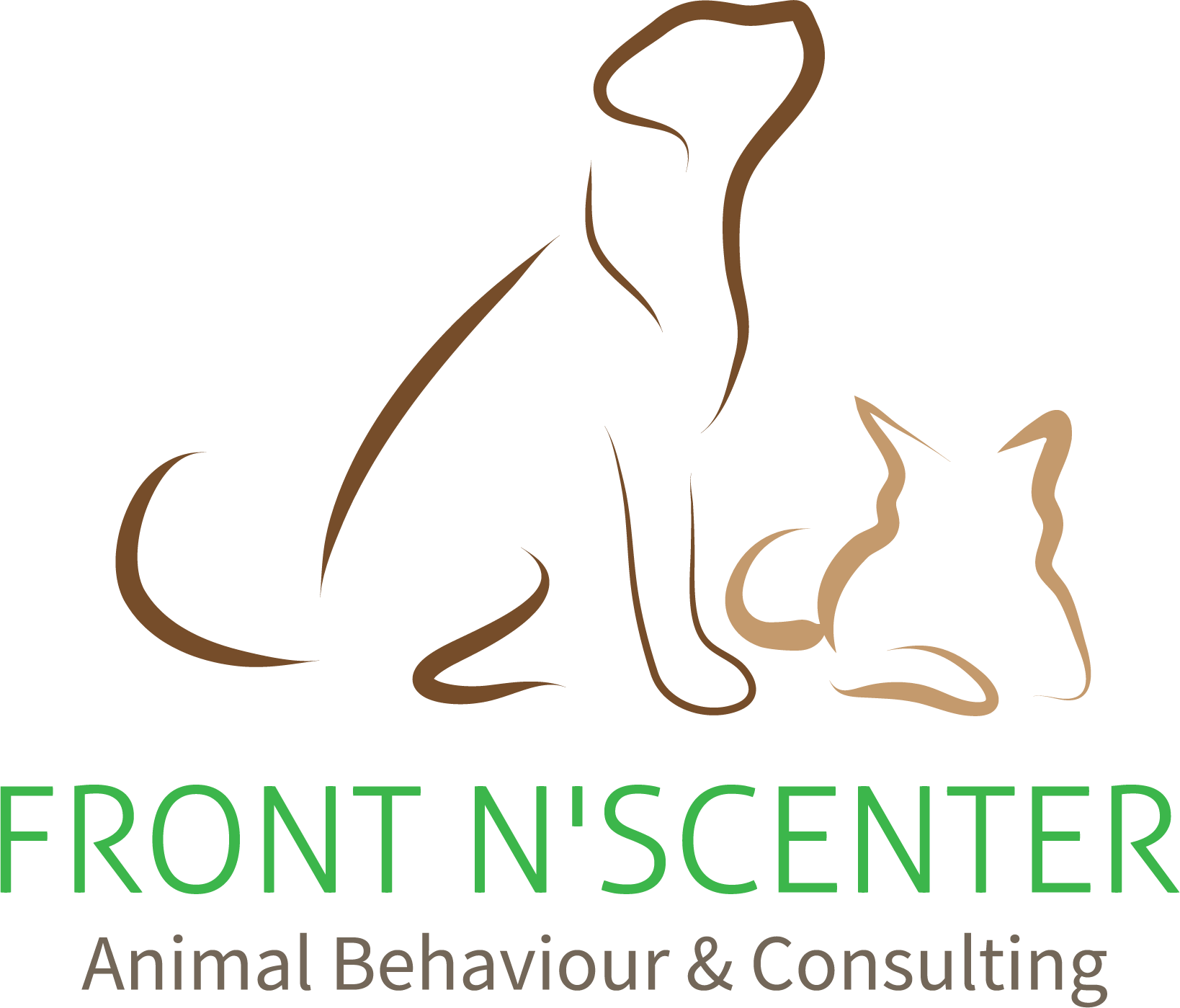
“He’s so friendly.”
“But he doesn’t bite”
“I’ve only ever euthanized for behaviour reasons if there is aggression”
These are the talking points I have heard while making the most heartbreaking decision regarding Trout. All were said from a place of love and kindness. There has never been any ill-intent behind those words.
Quality of life discussions around dogs with behavioural issues usually circle around safety. It is easier to justify euthanizing an animal that poses a risk to other people or animals.
But we need to stop calling it behavioural euthanasia and start calling it what it is – humane euthanasia. It is a humane good death for our pets who live in a world of mental and/or physical anguish. It is a humane good death and a gift to their families who have put their lives on hold, have tried all the training, all the treatments, and all the management and yet, they watch their pets suffer. Futile veterinary care and spectrum of care is becoming a discussion regarding pets with physical conditions that will not resolve and treatments only prolong the inevitable and prolong the suffering. We need to open the discussion of futile care of pets with behavioural pathologies.
If the kidney, or heart, or liver can become diseased, and if the pet is not improving despite prescribed veterinary care, we do not ask for the families to continue care because they are not actively dying. We know we can support these pets for a varying amount of time, but we don’t ask for their families to do so. The presentation of the disease process in these organs may have some similarities, but they don’t all do the same thing. We are fortunate that we have some better non-invasive diagnostics for these diseases. If these organs can have degenerative disease and it is ok to acknowledge that treatment is not going to improve the quality of life for the pet or family, then why is the brain any different in our eyes? Not all severe behaviour cases bite. Just as it is not appropriate to euthanize a pet for a one time bout of diarrhea, it is not appropriate to euthanize a puppy for jumping up on someone. A lack of training and normal puppy behaviour is a far cry from a dog with a chronic disease of the brain which may display some of the same behaviours.
We know that the brains in pets (as with people) with chronic behaviour diagnoses (as diagnosed by a vet) are actually physically different when viewed via FMRI. We also know that many of these pets have concurrent physical issues and often are in chronic pain. As we know more, we can intervene more. Many of these pets can be managed with a multimodal approach including medications, behaviour modification, and other supporting modalities. As it is a chronic illness, there will be blips but overall, they respond as expected and, although may not be able to function in all the things hoped, can have a very good quality of life.
But then there are the others, the ones who don’t respond to the medication, the ones that don’t respond to the training, the ones who management needs significantly alter the lives of their families. The families face judgement from friends, families, colleagues, and veterinary professionals. If the pet poses a safety risk to others, the families may get a bit more understanding when exploring quality of life. But as we do not wait for a pet to arrive at the vet clinic with extreme vitals to explore end of life decisions, why do we need to wait for a pet to cause physical harm to someone or something else before we acknowledge that we can provide a humane goodbye. And just as we don’t present euthanasia as the only treatment choice for a pet with a splenic mass, euthanasia should not presented as the only treatment choice when a pet’s brain isn’t functioning quite right.
In my profession, I get the privilege of helping families and pets through some of the most challenging times. I rejoice with them when they send updates of accomplishments that in their lives are huge (getting to go put gas in a car without needing to take the dog with extreme separation anxiety, is justification for a celebration), and I hold their hands as they make hard decisions about end of life or rehoming, or trying the next treatment. I get the privledge of being a shoulder to listen when they hear judgment from others and that they should just try this next one thing. I hear their frustration as they love their pets, but have a hard time living with them. These families go the extra miles and then some, and are to be commended for all they do for their pets. I also tell them at every step of the way that today’s decisions for moving forward with treatment do not need to be tomorrow’s decisions, and they will always have my support.
Now what happens, when you are a behaviour consultant, and an RVT and you have a pet who’s brain is not functioning quite right. Some know a little about life with Trout, some don’t know much, and some very special colleagues and professionals know a lot more about my very special springer. In a lot of ways, I am fortunate than most. I have an amazing behaviour vet and amazing colleagues that have been a sounding board through the past year. Discussions have been empathetic and I have always had the option to say, I don’t want to do the next one thing. While Trout initially showed fabulous response to medication and behaviour modification, those gains were lost, and his world got smaller. We tried increased activities, and decreased activities. We tried different medications and we tried different modalities. Trout’s life became either frantic or asleep. I can say we got an out though. While his behaviour continued to change, his skin conditions started to gear up with chronic infections, and his physio tech noticed and validated that his mobility wasn’t typical. A neuro consult validated that there was a strong possibility of degenerative disease that affects both behaviour and mobility. And yet, quality of life discussions were still not easy discussions for those around us.
I began tracking quality of life of good days vs bad days, which measures of moments of joy were weighted against the frantic. Frantic was the majority of the time unless asleep. Recovery time after a stressful event was tracked. The recovery time after an acupuncture appointment stretched into multiple days where Trout would not eat. Comments on his record at an appointment stated that despite all medications on board, he was excessive in presentation.
And yet, despite the glaring data, and the many times of trying just one more thing in hopes that this would give us a glimmer to hold on to, that maybe this time, he would acknowledge that there were other people in the world and that there was a world outside whatever was going on in his brain, there was the doubt, the shame, the guilt that I had not done enough. This is the profession I love, I am passionate about, and what will my clients, my colleagues, and the outsiders say when I couldn’t fix my own dog. Am I just an imposter that isn’t doing enough.
And while wrestling with decisions that I never wish on anyone, support has come in little ways. Trout’s job has been a teacher. He has taught those that have been open that sometimes training isn’t enough, that letting go isn’t giving up and taking the easy route, and that through it all, there is love.
When a kidney is failing and a pet is not doing well, we don’t ask for the liver and heart to fail as well before it is ok to discuss a humane and peaceful goodbye. Why is the brain such a different organ? Maybe one day we’ll have better diagnostics and better treatments, but for now, we mostly have observations and post-mortem diagnosis.
If Trout has taught anybody who has met him anything, let it be that fear, anxiety, and compulsive behaviour can look different than you think. When someone tells you that their pet is distressed, and all you see is frantic, please believe them and don’t say “but they’re just excited and friendly” Friendly does not mean that the pet is ok. Friendly doesn’t mean that the brain is healthy. It just means friendly.
Trout is a lucky one. While it hasn’t been smooth even with his vet care team, he has amazing and understanding vets looking out for him and us. We have caregivers who looked for answers and were caring with the ups and downs of results and trials and specialists. Trout is a lucky one, in that he showed signs of his brain not functioning properly with physical signs. He is lucky that he is loved by many and is being given a humane and peaceful passage and his suffering will be over.
If Trout has touched your life, has made you laugh, or entertained you, please honour him when you meet another owner who tells you of their pet not coping by letting them know that it is ok to talk about it and just accept their decisions without judgement.
If only love would have been enough, you and all the pets with brains that aren’t working quite right, would live an untortured life forever.
For all the pets who’s caregivers loved them enough to grant them a humane good death, and for the caregivers who were judged for doing so- may you find the peace you deserve.
In honour of Trout, I wish I could have done more, but I promise you that will not suffer anymore. You are so very loved, and I hope you soar with your well earned wings.
